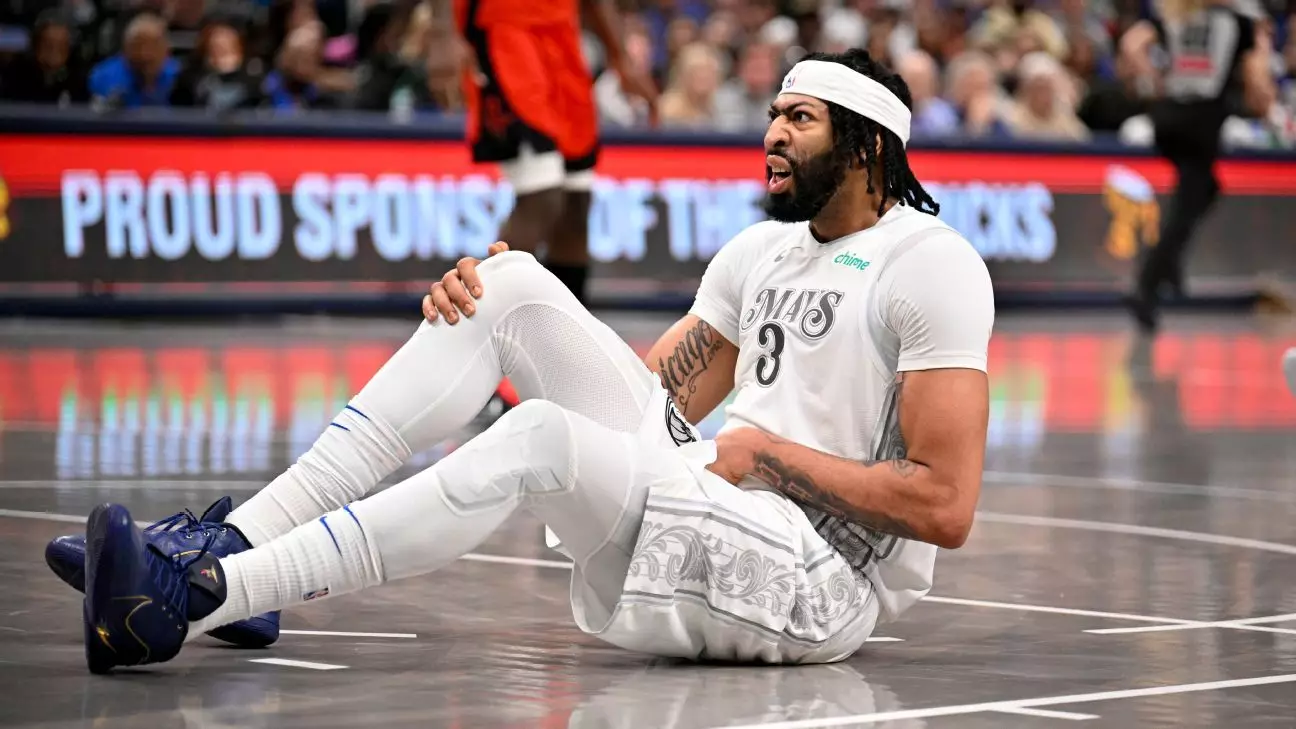The Dallas Mavericks’ recent acquisition of Anthony Davis was expected to usher in an exciting new era for the franchise. However, just as fans were beginning to savor the fresh dynamics of this superstar partnership, Davis suffered a lower-body injury during his debut against the Houston Rockets, casting a shadow over what could have been a momentous occasion. With less than five minutes left in the fourth quarter, Davis was declared doubtful to return, and he never resumed play after limping off late in the third quarter, leaving the outcome of the game shrouded in uncertainty.
The Mavericks managed to secure a 116-105 victory despite losing their star player, showcasing resilience and depth in the lineup. However, the collective joy was undoubtedly dampened by the circumstances surrounding Davis’ departure. The game marked an essential chapter in the Mavericks’ story, yet it began to reveal the fragility that often accompanies players with a history of injuries like Davis.
Davis’s integration into the Mavericks follows a highly publicized trade that sent Luka Doncic—an undeniable pillar of Dallas basketball—to the Los Angeles Lakers. This radical decision drew significant backlash, epitomized by the pregame protest that attracted approximately 1,000 disgruntled fans, an action that hardly reflects an enthusiastic reception for the newest Maverick. General manager Nico Harrison found himself under a microscope, facing threats and criticisms that raised questions about the direction the team was heading. The Dallas fan base is not only passionate but deeply invested in the team’s success, and rapid changes rarely go unnoticed.
The dramatic circumstances surrounding Davis’s arrival were further amplified by his immediate return to a competitive environment, showcasing both his talent and the expectations thrust upon him. Yet, given his previous injury challenges, the timing of this venture into Dallas must be scrutinized closely. Fans had high hopes, but the shadow of past durability issues loomed large.
Davis’s performance prior to his injury was nothing short of sensational. Collecting 26 points, 16 rebounds, 7 assists, and 3 blocks in a pivotal 31 minutes displayed his all-around game and his importance to the Mavericks. Notably, he energized the crowd by orchestrating plays, including a spectacular lob to center Daniel Gafford that excited the Arena. His charisma and apparent ease with the team instilled a sense of optimism among fans and players alike.
Yet, the abruptness of his exit—grabbing his midsection and displaying visible signs of discomfort—could have unsettling repercussions for the team. In a league where continuity and player chemistry are paramount, the potential for Davis to miss time once again could derail the Mavericks’ momentum. In his postgame comments, he downplayed the urgency of his injury, describing it as a tightness between his groin and quadriceps. Nevertheless, the concern remains palpable; injury histories can significantly impact a player’s confidence and rhythm, which are crucial for a successful championship run.
While Davis is hopeful that his tightness will dissipate and he’ll return quickly, skepticism persists among fans and analysts alike. The scenario prompts contemplation of whether the Mavericks adequately prepared for the possibility of injury complications that could arise with a player as dynamic, yet historically fragile, as Davis. Will Dallas’ management learn from the potential pitfalls of this trade and navigate the intricacies of player health moving forward?
The Mavericks have taken a bold step by positioning themselves around Davis, yet their commitment to long-term success requires careful monitoring of player health and performance. The forthcoming games will serve as a litmus test for the sustainability of the team’s ambitions and whether the personnel changes made, however drastic, can yield the desired outcomes. As Dallas continues to emerge from the shadows of losing Doncic, the question remains: can they truly thrive in the wake of uncertainty? The road ahead looks complex, and the urgency for strategic planning has never been clearer.


Leave a Reply